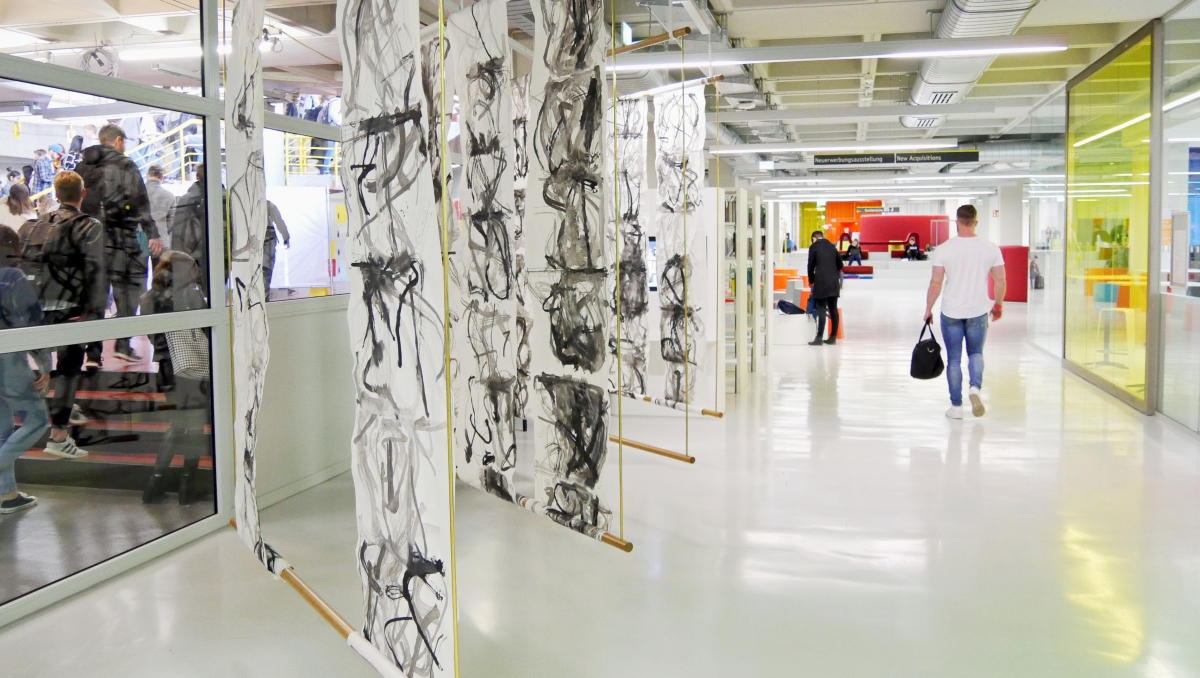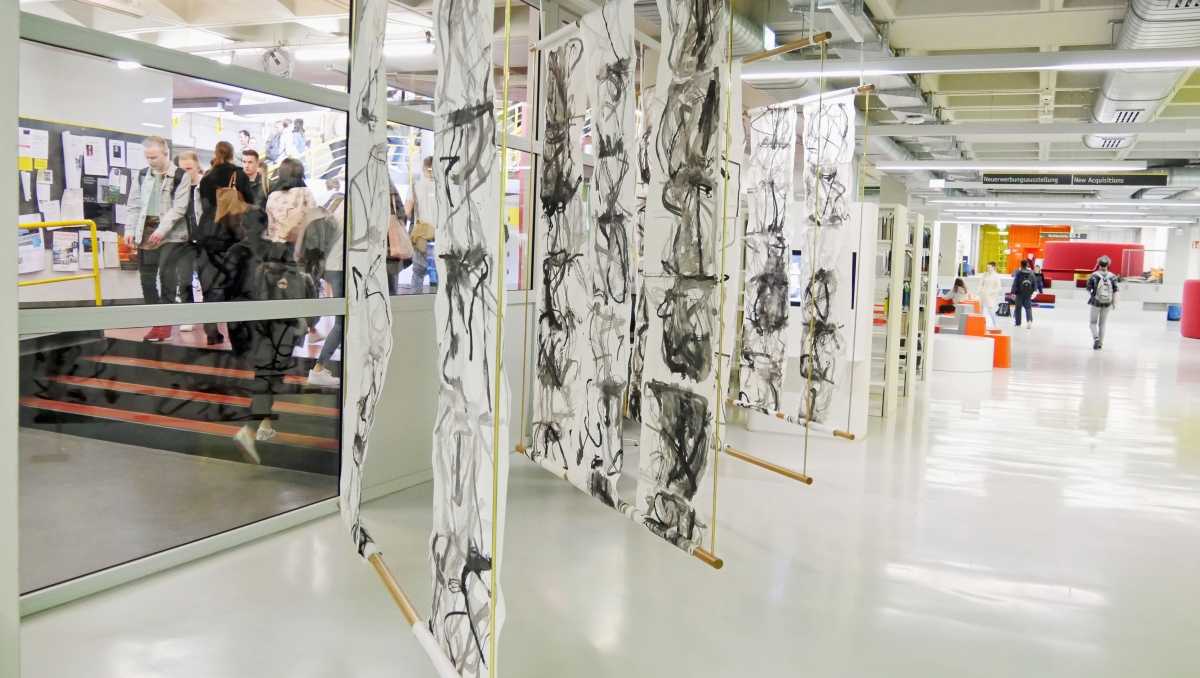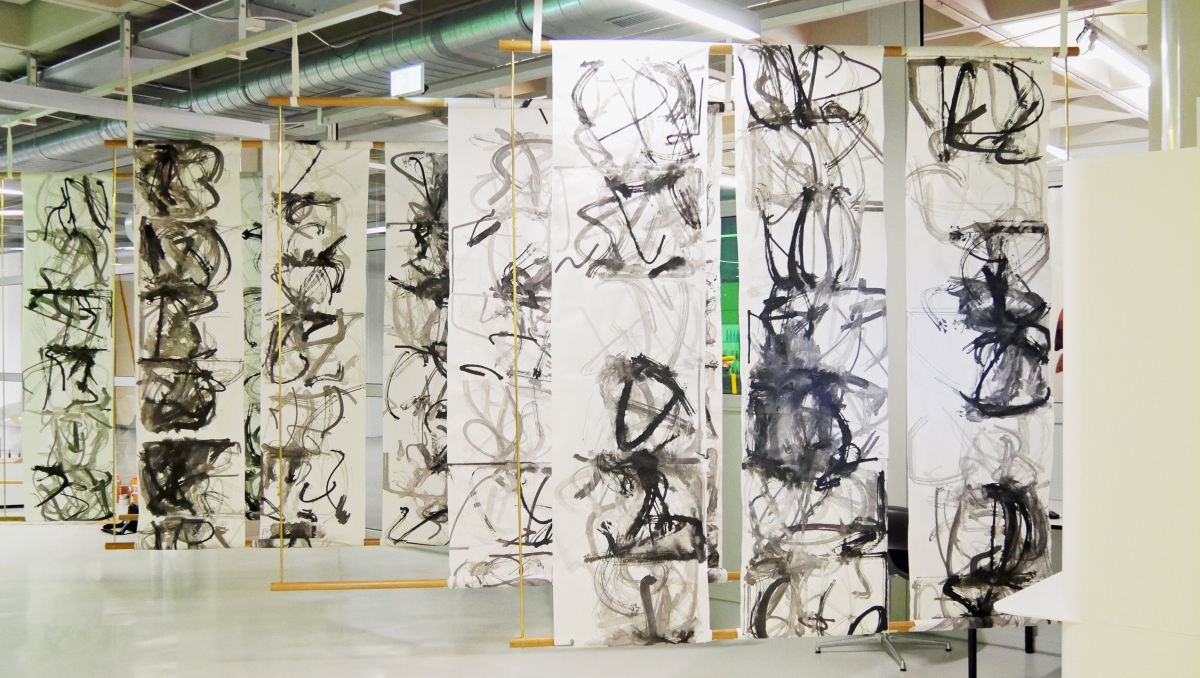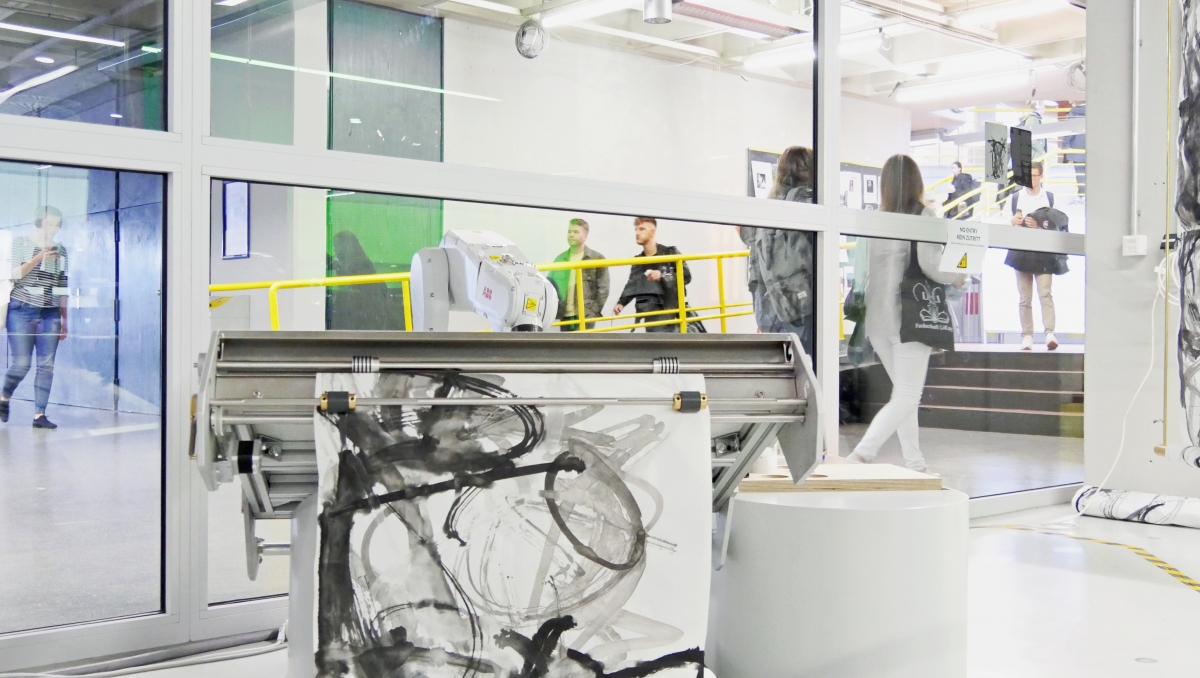Exhibition “(Learning) the Grammar of the Act”
This human-machine collaboration project between Liat Grayver and e-David connects painting with digital technology. e-David was designed by Oliver Deussen, Professor of Visual Computing at the University of Konstanz. The big challenge for this project: computers are usually deterministic devices, as they are programmed to carry out specific instructions. e-David works by following clear guidelines. This collaboration project, however, is about providing the computer the freedom to make its own decisions. To this end, Marvin Gülzow, a doctoral candidate at the Department of Computer and Information Science at the University of Konstanz, was called upon to further develop e-David.
As part of the exhibition “(Learning) The Grammar oft he Act”, the robot now traces the movements of the people entering the university library through the side wing. The result: paintings created by seemingly expressionistic brush strokes.
e-David paints by reacting to the movements of the exhibition visitors
https://youtu.be/JzYTild7sYs
While the computer is programmed to follow certain rules – the "Grammar of the Act” – as the exhibition title calls it, Gülzow and Grayver also arranged for moments where e-David’s decisions are less restricted: this includes, for example, allowing the robot to ascertain and react to certain regularities in accordance with the principles of machine learning. But the choice of canvas material also plays a role. “For these paintings, I selected rice paper, a very thin paper that absorbs the paint. As a result, the material continues to work in an uncontrolled way, allowing colours to overlap and back-runs to form,” explains painter and media artist Grayver. First, e-David dips the calligraphic brush attached to his arm into the black colour, then pulls the arm upwards and places the brush on the white paper roll, initially drawing a thin, fluid line. The arm swings upwards, draws a second, thicker line. After completing five lines, e-David now dips the brush into the water glass in order to continue the process with watery black paint. “Viewers would not think that these images were created by a machine,” says Grayver.
Liat Grayver grew in a Jewish-Iraqi family that emigrated to the Israeli border region. She studied classical painting at the Academy of Fine Arts Leipzig (HGB) and graduated as a Meisterschülerin (postgraduate of art studies). As an artist in residence at the Institute for Advanced Study Konstanz, Grayver has been working on the project “Human-Machine: Interaction as a Neutral Base for a New Artistic and Creative Practice” since October 2018. One of the project aims is to reflect on the digital age as well as current perspectives and perceptions in order to explore what kind of new foundation the interaction between man and machine offers in regard to artistic and creative processes. When describing the project, she said: “The development of a new technology, like a painting robot, provides me with a certain and previously unknown artistic freedom.”
For more information about the artist in residence and the Institute for Advanced Study Konstanz, which is part of the Cluster of Excellence "Cultural Foundations of Integration" at the University of Konstanz, please visit www.exc16.de.




